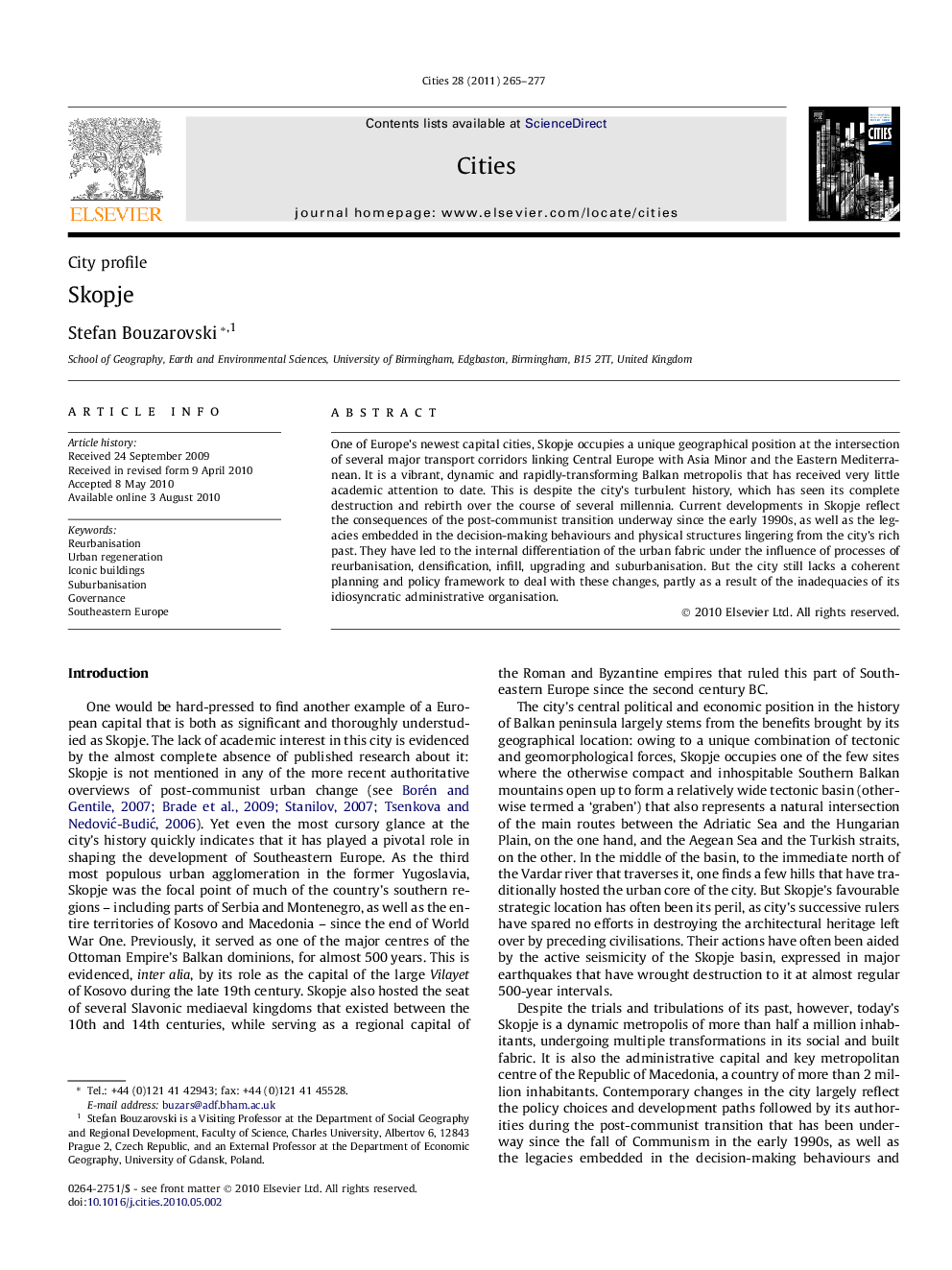| Article ID | Journal | Published Year | Pages | File Type |
|---|---|---|---|---|
| 1008793 | Cities | 2011 | 13 Pages |
One of Europe’s newest capital cities, Skopje occupies a unique geographical position at the intersection of several major transport corridors linking Central Europe with Asia Minor and the Eastern Mediterranean. It is a vibrant, dynamic and rapidly-transforming Balkan metropolis that has received very little academic attention to date. This is despite the city’s turbulent history, which has seen its complete destruction and rebirth over the course of several millennia. Current developments in Skopje reflect the consequences of the post-communist transition underway since the early 1990s, as well as the legacies embedded in the decision-making behaviours and physical structures lingering from the city’s rich past. They have led to the internal differentiation of the urban fabric under the influence of processes of reurbanisation, densification, infill, upgrading and suburbanisation. But the city still lacks a coherent planning and policy framework to deal with these changes, partly as a result of the inadequacies of its idiosyncratic administrative organisation.
